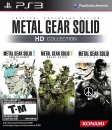Project Shield - the challenges ahead
Overall, Project Shield looks like an intriguing convergence of cutting-edge mobile technology along with a gateway to high-end PC gaming in a more mobile form-factor, but there are clearly some concerns - the first of which can be summed up quite nicely by utilising one of Nvidia's own roadmap slides. Here we see the evolution of the mobile Tegra line, based on their superhero-themed codenames. Kal-El is the existing Tegra 3 while Wayne is almost certainly the Tegra 4 chip found in Project Shield. As you can see, the rate of technological progression in the mobile space is simply phenomenal - there's always an enormous leap in performance just around the corner. We have to wonder if rapidly evolving tech with yearly updates is the best basis for what a form factor traditionally associated with a fixed platform.

This isn't quite so much of an issue with multi-purpose tablets. Taking the iPad as an example, resale values remain pretty high since gaming is just one part of the package - the product isn't defined by the 3D power of the titles on offer and upgrading every couple of years isn't especially painful once you're on the ladder. Our concern with Shield is that staying on the cutting edge of 3D performance could be a whole lot more expensive and Tegra 4 could date quite quickly. It's worth bearing in mind that Nvidia is just the first vendor to break cover with its next-gen mobile GPU parts, and if even half of the rumours we've heard from well-placed sources about the PowerVR Rogue technology are true (Xbox 360 performance with DX11 GPU features, in a nutshell), we could find a situation where Nvidia is swiftly outclassed technologically, as was the case with Tegra 2 and 3 before it.
That said, the counter-argument to that is that there's a strong reason why products like the iPad mini and the Google Nexus 7 are great little gaming machines despite utilising now-outdated processing technology: mobile games need to run on a wide range of devices and developers tend to target the capabilities of the most popular hardware, which is rarely the latest and greatest. Dead Trigger 2 and Hawken look really good, but these are games presumably designed to scale across a range of devices and so perhaps not the best showcase for Tegra 4. Also consider that the leaps in mobile processing power are being used to address displays with increasingly gargantuan resolutions. This is something that Shield doesn't need to worry about as much with its native 720p display.
Obviously there are more practical concerns too, brought into sharp focus by the deeply disappointing experience offered by the Archos GamePad - how well does the Android OS transition onto the system, how good are the physical controls, how does the device feel in the hand and do Nvidia's battery usage claims correlate with real-life usage? And then there's the really big question mark here - just how much is this new handheld going to cost? With Project Shield due in Q2 this year, hopefully we'll be able to get some answers - and some hands-on time - soon...
Read more: http://www.eurogamer.net/articles/df-hardware-nvidia-project-shield-spec-analysis

















